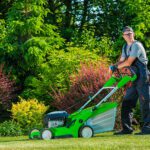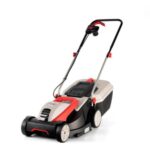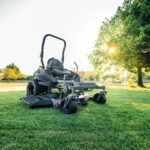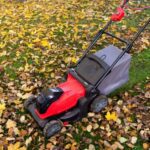A lot of people ask me, as someone who has worked in lawn care for over 7 years, when is the best time to stop mowing your yard for the fall and winter. Read below about “When to Stop Mowing Your Lawn for the Fall Season?”.
It’s not always easy to find the truth. The best time to put away your lawnmower depends on where you live, the type of grass you have, the season, and your yard care goals.
I’ll share my knowledge on how to figure out when to stop mowing in the fall in this piece. I’ll talk about how to tell when it’s time to stop cutting the grass, how to prepare and take care of your yard over the winter, and the best ways to bring it back to life in the spring.
Since I know a lot about lawn care services, you can trust that the tips I give you will keep your lawn healthy and growing all year.
Table of Contents
When You Should Not Mow Your Grass in the Fall
Most yard experts, including me, say you should stop cutting your grass 4 to 6 weeks before the first frost date in your area.
In the north, where grass goes to sleep for the winter, this is generally in October or November. In warmer parts of the south, you might be able to mow until December.
If you see any of these signs, it’s time to stop cutting the grass for the season:
- Grass Growth Slowed Down—Mowing is only needed when growth calls for it. Because the days are getting shorter in the fall, cool-season plants like bluegrass and fescue grow more slowly. If the grass grows less than 1/2 inch per week, you don’t need to mow it anymore.
- Lawn Dormancy—Northern plants stop growing and go dormant when the temperature drops to about 55°F at night. Cutting grass that isn’t growing can hurt plants.
- Falling Leaves: When trees lose their leaves, you can tell that winter is coming. Mowers can break down when leaves cover the grass, so it’s best to stop cutting when leaf litter builds up. Rake leaves when it’s time.
- Frost—Cutting should stop when light frosts show up. When grass blades are frozen, they often tear and turn brown instead of cutting neatly. Before you mow again, wait until all the frost has melted.
When you mow too late, the plants could get sick, but when you stop too early, the grass looks shaggy. Keep an eye on how fast your lawn grows and use the above signs to figure out when to put your mower away every year.
Tips for Fall Lawn Care
Even though you won’t be mowing your yard, you shouldn’t forget about it at all during the fall and winter. With the right care now, you can get your yard ready for healthy growth in the spring. These are my best suggestions:
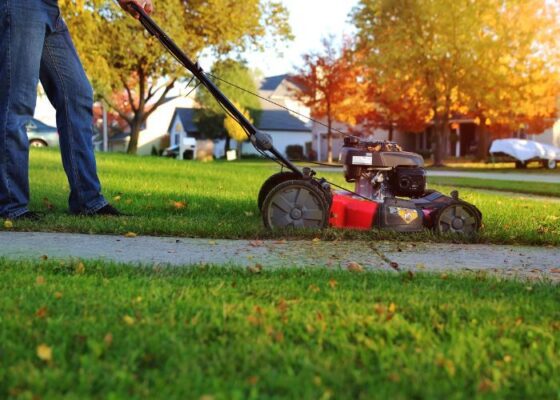
- Keep Mowing Leaves—Even though you shouldn’t be cutting the grass anymore, keep using your mower to turn dead leaves into nutrients for your yard. Do not let leaves sit on heavy mats.
- Use fall fertilizer. Fertilizing in the fall helps roots grow and stores food for the winter. Pick a recipe that is low in nitrogen and high in potassium.
- Aerate Soil That Is Too Compacted: Core aeration breaks up compacted soil so that water and nutrients can get to the plants better. The cool fall weather is great for this job.
- Overseed Bare Spots: Rake up bare spots and cover them with similar types of grass so that new plants can grow in before the winter.
- Change the way you water—as the weather gets cooler, water less often but more deeply. Aim for 1 to 1.5 inches of rain or sprinklers each week until the first freeze.
If you take good care of your yard in the fall, it will grow back quickly in the spring. Your lawn will be in great shape come spring if you let it go dormant and make sure it has enough nutrients and water.
Spring Lawn Care Tips
Your lawn will go from being dormant to busy growth as soon as spring comes around. As soon as possible, do these things to get green grass:
- Do Not Mow—Do not mow until the new growth is about 3 inches tall. Cutting too early could hurt plants that are just starting to grow.
- Clean Up Debris—Get rid of any sticks or other junk that fell over the winter so that the new blades have room to grow.
- Check for Weeds: Weed seeds grow best in the spring. Start controlling early, before plants you don’t want take hold and spread.
- When the soil temperature rises above 55°F, you should use spring fertilizer. Pick a balanced or high nitrogen mix to help plants grow and turn green quickly.
- Change the Irrigation: As the grass starts to grow, water it more often. Getting 1 to 1.5 inches of rain a week stops drought stress.
- Fix Weak Spots—If some spots didn’t get enough grass last fall, reseed them and give them a starter fertilizer for lush new grass.
Conclusion
If you give your garden good care in the spring, it will quickly turn green and grow well. Taking care of your lawn properly in the fall makes it easier to bring it back to life after winter slumber.
If you mow and take care of your yard according to the seasons, it will always look its best. Please let me know if you need any more help with your lawn care! I’m always glad to share what I know and have learned.

Barry, the expert behind LawnInspection.com, holds a Master’s degree in Horticulture and brings over 20+ years of hands-on experience in landscaping and lawn care. With certifications in sustainable lawn management, Barry is dedicated to providing readers with authoritative insights and practical tips for maintaining lush, healthy lawns. His extensive knowledge and commitment to excellence ensure that every piece of advice on LawnInspection.com helps transform your lawn into a green oasis with proven, eco-friendly practices. Connect with Barry on social media: Instagram and Facebook.




